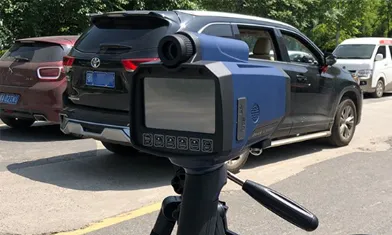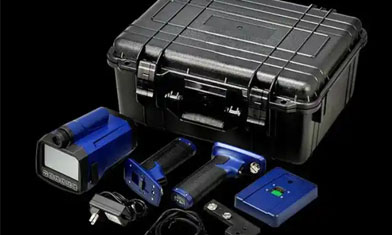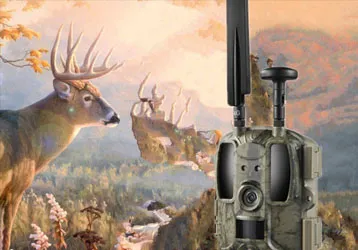What fields are riflescopes mainly used in?
As a precision optical aid, riflescopes, with their core functions of magnifying targets, correcting ballistics, and improving shooting accuracy, have been widely used in various fields, including military, civilian, and specialized industries. The performance and specification requirements vary significantly across different sectors. Specific application scenarios are as follows:
1. Military and Defense: Core Combat Auxiliary Equipment
In military settings, riflescopes are the "eyes" of firearms, artillery, and sniper weapon systems, directly impacting combat accuracy and mission success rates. They are primarily used in the following scenarios:
Sniper operations: Dedicated sniper scopes are core equipment, requiring high magnification (typically 8-25x), high light transmittance (≥90%), ballistic compensation (supporting windage and altitude adjustments), and some also incorporate night vision modules (such as low-light and infrared scopes). These scopes are suitable for sniper rifles to engage targets at medium- and long-range ranges (800-2000 meters). They are commonly used in counter-terrorism, special operations, and battlefield precision strikes. Conventional infantry combat: Tactical scopes for rifles primarily feature low-magnification (1-4x) or non-magnification red dot sights, accommodating both close-range rapid aiming and mid-range precision shooting. Suitable for both automatic and assault rifles, they help soldiers quickly lock onto targets in complex battlefield environments (such as urban fighting and field assaults), improving firepower efficiency.
Heavy weapon support: For heavy weapon systems such as mortars, anti-tank missiles, and ship-borne machine guns, scopes must feature a wide field of view, vibration resistance, and strong environmental adaptability. Some systems also integrate laser rangefinders and ballistic calculation functions, helping operators accurately calculate range and trajectory, ensuring the accuracy of heavy firepower weapons.
II. Civilian Hunting: Balancing Precision Hunting and Ecological Protection
In hunting scenarios, scopes must balance precision and humane hunting (minimizing prey suffering) while also adapting to the habitats of different prey species. Key applications include:
Small and medium-sized game hunting: For medium- to short-range (100-300 meters) hunting of hares and deer, scopes with variable magnifications of 3x to 9x are commonly used. These scopes, along with clear granular scales or ballistic impact markers, help hunters quickly locate targets in woodlands and grasslands, ensuring a single shot hits the vital points.
Long-range large game hunting: When hunting highly alert and large prey such as elk and wild boar, scopes with high magnifications of 8x to 16x are required. Some scopes feature a side focus function (to eliminate parallax) to help hunters accurately locate the prey's vital points in open terrain (such as plains and mountains), avoiding wasted shots. Ecologically Controlled Hunting: In some countries' ecological conservation projects (such as controlling overpopulation of herbivores), professionals use smart scopes with recording functions. These record shot time, location, and trajectory data for subsequent traceability and ecological data statistics, combining "scientific control" with "precision hunting."
III. Shooting Sports: A Core Tool for Professional Competition and Amateur Recreation
Shooting sports place extremely high demands on the accuracy, stability, and ease of use of scopes. Different scopes are suitable for different competition scenarios:
Olympic shooting events: For the three-position events, such as the 10m air rifle and 50m rifle, non-magnified "peep sights" or low-magnification (1-2x) optical scopes are used, focusing on "zero parallax" and "high definition," enabling athletes to accurately aim at the center of the target while stationary and minimizing interference from ambient light. IPSC Practical Shooting Competitions: This is a dynamic shooting sport (athletes must shoot at multiple targets while moving). Non-magnified red dot sights or holographic sights are commonly used. These sights feature rapid target acquisition and a field of view with no magnification restrictions. These sights help athletes quickly lock onto their targets while moving at high speeds, improving their shooting reaction times (typically aiming and shooting within 0.5 seconds).
Long-distance shooting competitions, such as 1000-yard (approximately 914-meter) precision shooting competitions, utilize 15-25x ultra-high-magnification sights equipped with a micro-scale ballistic disc, side focus knob, and objective lens hood. These sights accurately calculate the effects of wind speed and altitude on ballistic trajectory. Some high-end models also support pre-stored ballistic data (automatically adjusting the aiming point after entering target distance and wind speed), helping shooters achieve the high precision of a "first-shot hit." Amateur Shooting: In shooting clubs and outdoor activities, entry-level variable magnification scopes with 3x-9x magnification are commonly used. These scopes are characterized by ease of use, affordability, and durability. They are compatible with civilian rifles (such as the AR-15 and Remington 700) and meet the needs of ordinary enthusiasts for precision shooting and outdoor experience.
IV. Security and Law Enforcement: Precision Law Enforcement Assistance for Special Missions
In law enforcement scenarios such as police, SWAT, and security, scopes must be compatible with both non-lethal and lethal weapons, balancing deterrence and precision control.
SWAT Counter-Terrorism: For hostage rescues and terrorist strikes, SWAT snipers use night vision scopes (low-light or infrared) and silenced weapon-compatible scopes. These scopes offer low-light adaptability and strong anti-interference capabilities, enabling precise targeting at night or in complex environments (such as dark rooms and smoke) to avoid accidental hostage casualties. Border and Customs Enforcement: During border patrols and anti-smuggling operations, border guards use high-magnification observation scopes (10-20x), some with integrated laser rangefinders (50-2000 meters). These scopes can identify suspicious individuals and vehicles at long distances (e.g., detecting hidden items in smuggled vehicles). They are also compatible with sniper rifles to respond to sudden violent resistance to law enforcement.
Security and Escort: During bank escorts and security operations at key locations (e.g., airports and nuclear power plants), security personnel use red dot sights or low-magnification tactical scopes, compatible with riot control rifles and shotguns. These scopes prioritize close-range rapid response, enabling rapid targeting of suspects in sudden violent incidents (e.g., robberies and assaults), providing deterrence and precise control. 5. Special Industries and Scientific Research: Niche but Critical Application Scenarios
In addition to the mainstream sectors mentioned above, riflescopes also play an irreplaceable role in certain specialized industries:
Wildlife Observation and Scientific Research: Ecologists and zoologists use high-magnification observation riflescopes (20-30x) with a tripod mount to observe wildlife behaviors (such as breeding and foraging) from a distance (500-1000 meters), preventing human activity from interfering with the animals' natural state. They also record high-definition images (some riflescopes support external cameras) for scientific data collection.
Industrial Inspection and Calibration: In machinery manufacturing and construction engineering, high-precision optical riflescopes (similar to a microscope combined with a riflescope) can accurately locate minute errors in parts (such as 0.01 mm aperture deviation) and calibrate the installation angles of large equipment (such as the docking accuracy of steel bridge structures). These replace traditional rulers and calipers, improving inspection efficiency and accuracy. In the aerospace sector, the "anti-electromagnetic interference sight" is used in drone inspections and satellite ground calibration missions to accurately locate the drone's flight path (for example, pinpointing a fault point during high-voltage line inspections) and correct the angle of satellite signal receivers, ensuring stable operation in complex electromagnetic environments.





















